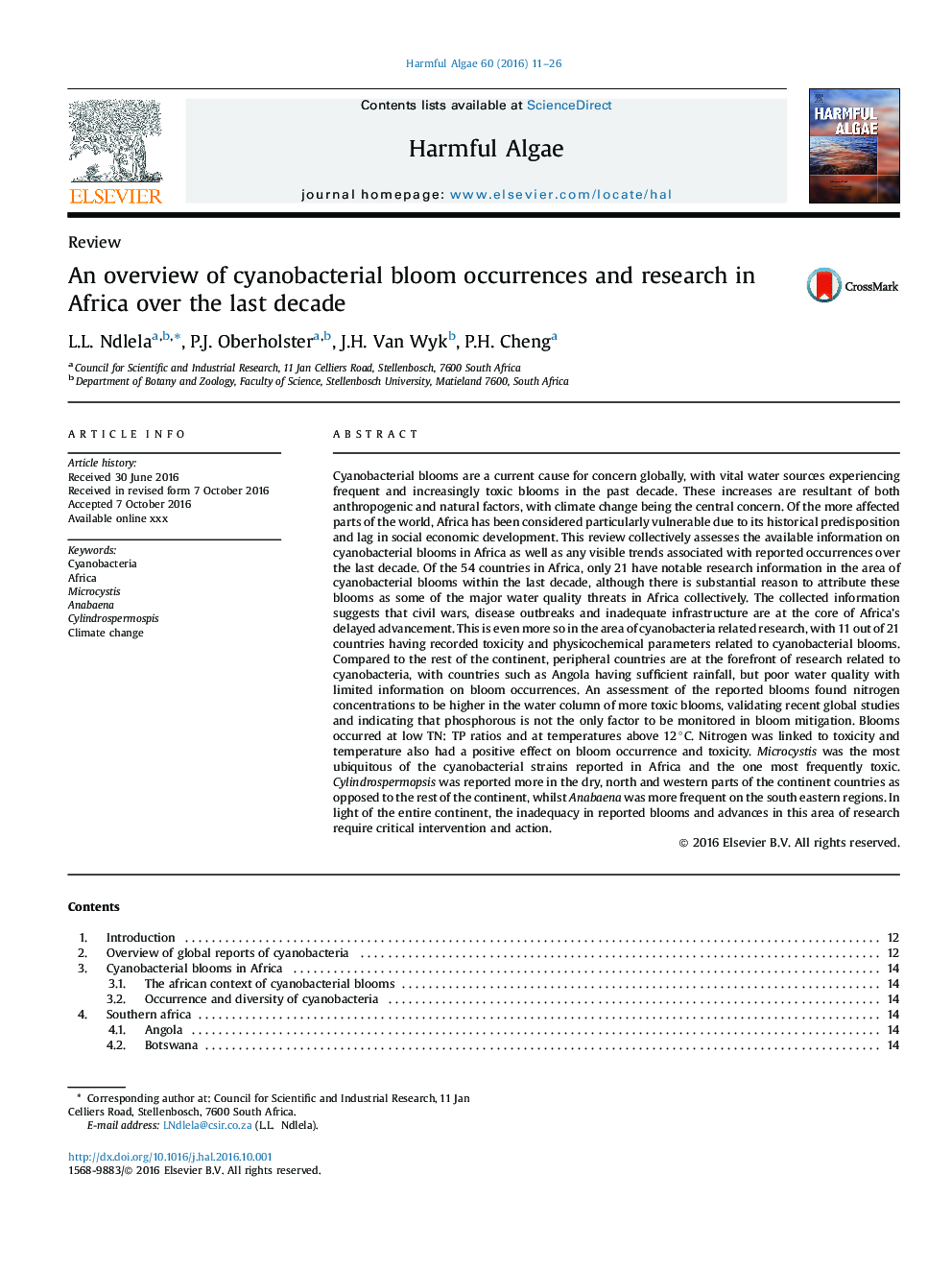| کد مقاله | کد نشریه | سال انتشار | مقاله انگلیسی | نسخه تمام متن |
|---|---|---|---|---|
| 4545103 | 1626912 | 2016 | 16 صفحه PDF | دانلود رایگان |
Cyanobacterial blooms are a current cause for concern globally, with vital water sources experiencing frequent and increasingly toxic blooms in the past decade. These increases are resultant of both anthropogenic and natural factors, with climate change being the central concern. Of the more affected parts of the world, Africa has been considered particularly vulnerable due to its historical predisposition and lag in social economic development. This review collectively assesses the available information on cyanobacterial blooms in Africa as well as any visible trends associated with reported occurrences over the last decade. Of the 54 countries in Africa, only 21 have notable research information in the area of cyanobacterial blooms within the last decade, although there is substantial reason to attribute these blooms as some of the major water quality threats in Africa collectively. The collected information suggests that civil wars, disease outbreaks and inadequate infrastructure are at the core of Africa’s delayed advancement. This is even more so in the area of cyanobacteria related research, with 11 out of 21 countries having recorded toxicity and physicochemical parameters related to cyanobacterial blooms. Compared to the rest of the continent, peripheral countries are at the forefront of research related to cyanobacteria, with countries such as Angola having sufficient rainfall, but poor water quality with limited information on bloom occurrences. An assessment of the reported blooms found nitrogen concentrations to be higher in the water column of more toxic blooms, validating recent global studies and indicating that phosphorous is not the only factor to be monitored in bloom mitigation. Blooms occurred at low TN: TP ratios and at temperatures above 12 °C. Nitrogen was linked to toxicity and temperature also had a positive effect on bloom occurrence and toxicity. Microcystis was the most ubiquitous of the cyanobacterial strains reported in Africa and the one most frequently toxic. Cylindrospermopsis was reported more in the dry, north and western parts of the continent countries as opposed to the rest of the continent, whilst Anabaena was more frequent on the south eastern regions. In light of the entire continent, the inadequacy in reported blooms and advances in this area of research require critical intervention and action.
Journal: Harmful Algae - Volume 60, December 2016, Pages 11–26
